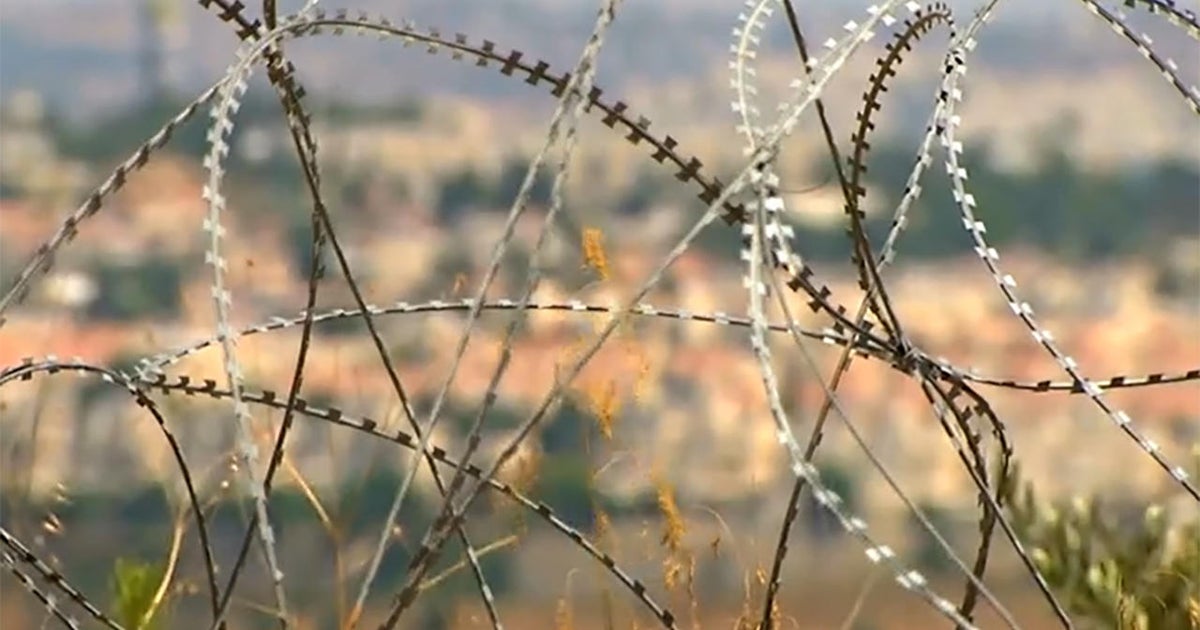NASA, SpaceX launching a new era of commercial crewed spaceflight
Nine years ago this July, American astronauts last left Planet Earth from American soil, when the Atlantis blasted off.
The final mission of the space shuttle era carried a special payload: a small American flag. It's been a sentimental fixture, floating above Earth, ever since.
"It was a good way to just say, 'Hey, the next time somebody flies something from the United States, this flag is going to be up here waiting for them," said astronaut Doug Hurley, who piloted the shuttle on that mission.
But no one knew how, and when.
Correspondent Mark Strassmann asked, "Did you think then that the person who might bring that flag home could be you?"
"No, absolutely not!" he laughed. "I didn't think I was gonna fly again necessarily, let alone be potentially the guy that goes up and gets it."
But it looks like Hurley will get that chance after all. On Wednesday he and astronaut Bob Behnken will begin a historic mission from Florida's Kennedy Space Center. They'll climb aboard a SpaceX rocket and launch into a new era of commercial, human spaceflight.
"I think the most exciting thing about this mission, for both Doug and I, is bringing that capability and inspiring hopefully another generation of engineers and scientists to challenge themselves and to try to do great things like our nation does," Behnken said.
When the shuttle retired in 2011, NASA's astronauts had only one way to get to space: hitching a ride on a Russian Soyuz rocket.
"The partnership is strong, but we don't want dependency," said NASA Administrator Jim Bridenstine.
"Some of this is American pride," said Strassmann.
"Prestige. I like to use the word prestige," Bridenstine said. "Great nations should be able to launch their own astronauts into space."
So in 2014, NASA hired Boeing and Elon Musk's SpaceX to be their Uber and Lyft to the space station. For NASA, it's more cost-effective way, and allows the agency to focus on the science of exploring deep space.
SpaceX beat out Boeing in being first to fly. Its design has a "Back to the Future" feel, and flashy new technology throughout.
Strassmann said, "It's been described as a flying iPhone."
"It's a pretty big iPhone, though!" Behnken said. "Three touch screens in front of you. So, I would at least give it credit to be an iPad!"
SpaceX has a track record; they've already flown 19 missions bringing cargo to the space station, but this time, for the first time, the reusable rocket's capsule will carry people.
Strassmann asked, "Do you have any reservations about flying for a company that has never actually put someone into space before?"
"I don't think reservations are the right word," Behnken replied. "I think what we really concern ourselves with as you know test pilot school graduates is, 'Hey, what's the plan look like?' You know, tell me the buildup that we're going to march through. Let's look at the details of that, and when all those things are done appropriately, we'll be ready to fly on it from a human perspective."
"Does it mean something to you guys, in this new age, to be the first?" asked Strassmann.
Hurley said, "After you come back and it's successful, you know, Bob and I can go hang out someplace and have a beer and maybe then we can reflect on all those things, but it's kind of, you're just so hyper-focused on getting to that point and making it a success."
Landing the modern SpaceX capsule back on Earth will have a more retro-approach – a splashdown, like the Apollo moonshots of the 1960s and '70s.
The mission, said Margaret Weitekamp, a space historian at the Smithsonian National Air and Space Museum, "has potential, then, to really be a means for bridging differences and bringing people together."
Weitekamp hopes this new era in space may help unite our polarized country, just as Apollo 11 did at the height of Vietnam.
"There is always something that stirs the heart in a different way when you know that you are watching something through the eyes of a fellow human being," she said. "I think it puts us sitting in their seat. We imagine ourselves looking through their eyes."
And, after months of COVID-misery and fatigue, experiencing that feeling of wonder, riding the rocket along with Behnken and Hurley.
After years of training, the astronauts arrived at Kennedy Space Center on Wednesday, where they were greeted by a mask-wearing Bridenstine, something that in all the years of preparation, no one could have ever predicted.
"I think right now, in the midst of this pandemic, where people are struggling with maybe even just simple motivation, maybe people are concerned about the future, what NASA is so amazing at doing is bringing people together and inspiring them for a future that is brighter than today," he said.
- GALLERY: NASA's final shuttle flight
For more info:
- SpaceX
- SpaceX Dragon
- NASA
- Smithsonian National Air and Space Museum, Washington, D.C.
Story produced by Miles Doran and Michelle Kessel. Editor: Emanuele Secci.
See also:
- SpaceX CEO Elon Musk on the next giant leap for mankind ("Sunday Morning")
- Seeing red: Mankind gets closer to Mars ("Sunday Morning")








